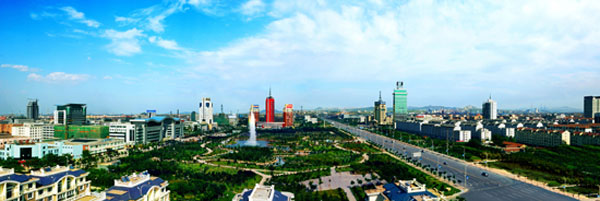Zibo National New and Hi-tech Industrial Development Zone

Zibo Hi-tech Zone [Photo/china-zibo.gov.cn]
Zibo New and Hi-tech Industrial Development Zone in Shandong province is a national-level hi-tech zone founded in November 1992 under the approval of the State Council. It became a national intellectual property pilot zone in 2010.
The zone now covers 121.13 square kilometers and has a resident population of 149,000.
Located in the northeast part of the Zibo city center, the zone enjoys a good geographical location and very convenient transport. It is 80 km away from Jinan Yaoqiang International Airport, 210 km from Qingdao Liuting International Airport and Qingdao Port, 280 km from Rizhao Port and 320 km from Tianjin Port. The Qingdao-Jinan Railway (also known as Jiaoji Line), Jinan-Qingdao Expressway, and national highways G309 and G205 go through the zone. The Xintai and Zibo-Dongying railways also join up here.
After years of development, the zone has developed several characteristic industrial clusters of new materials, new energy, energy conservation and environmental protection, medical health, electronic information, advanced equipment manufacturing, and modern services.
In 2017, the regional GDP reached 26.14 billion yuan ($3.79 billion), a year-on-year increase of 9.12 percent. The 237 industrial enterprises above designated size in the zone created a total output value of 46.33 billion yuan in 2017, with a yearly growth rate of 18.3 percent while the prime operating revenue was 51.83 billion yuan, increasing by 14 percent over 2016.
The fixed-assets investment of the zone in 2017 totaled 23.20 billion yuan, an increase of 6.6 percent year-on-year. The total retail sales of consumer goods in 2017 rose by 10 percent compared to that in 2016, reaching 9.51 billion yuan. The export-import revenue was 6.29 billion yuan, with a year-on-year increase of 7.1 percent.
Invest in China Copyright © 2024 China Daily All rights Reserved
京ICP备13028878号-6
 京公网安备 11010502032503号
京公网安备 11010502032503号





